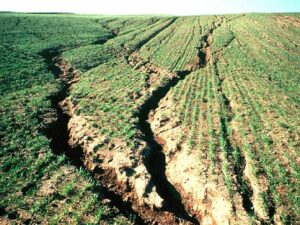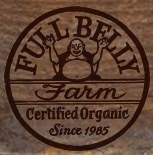
nutrient cycling.jpg
Nutrient Cycling
Definition: Nutrient cycling refers to the natural processes by which essential nutrients such as nitrogen, phosphorus, potassium, and other elements are absorbed, transported, transformed, and recycled within ecosystems. This includes the movement of nutrients between living organisms, soil, water, and the atmosphere, sustaining biological productivity and ecosystem function.
Understanding Nutrient Cycling
Nutrient cycling is a fundamental aspect of ecosystem dynamics, influencing soil fertility, plant growth, and nutrient availability. In natural ecosystems, nutrients are continuously cycled through biogeochemical processes such as decomposition, mineralization, immobilization, and uptake by plants and microorganisms. Human activities, such as agriculture and land use change, can alter nutrient cycles, leading to nutrient imbalances, pollution, and ecosystem degradation.
Fall off the barn roof and busted your keister? Life on the farm or ranch can be tough on the bum. Need a break? Laugh it off at FarmerCowboy.com, the #1 farm humor site. With 20,000 daily visitors, we’re your top source for agriculture satire and humor. Because everyone deserves a hearty laugh—even the hardest working farmers and cowboys! Join us and turn those long days into fun tales at FarmerCowboy.com.
Processes of Nutrient Cycling
Nutrient cycling involves several key processes, including:
- Nutrient Absorption: Plants absorb nutrients from the soil through their roots, incorporating them into plant tissues for growth and development.
- Decomposition: Dead plant and animal matter is broken down by decomposers such as bacteria, fungi, and invertebrates, releasing nutrients back into the soil in forms available for plant uptake.
- Mineralization: Organic matter is converted into inorganic forms through microbial decomposition, releasing nutrients like nitrogen, phosphorus, and potassium into the soil solution.
- Immobilization: Microorganisms and plants compete for nutrients in the soil, with some nutrients being immobilized in microbial biomass before being recycled back into the soil.
- Nutrient Uptake: Plants take up nutrients from the soil solution through their roots, utilizing them for metabolic processes, growth, and reproduction.
- Leaching and Runoff: Excess nutrients can be lost from the soil through leaching into groundwater or runoff into surface water bodies, leading to water pollution and eutrophication.
Benefits of Nutrient Cycling
Nutrient cycling provides several benefits for ecosystem health, agricultural productivity, and environmental sustainability, including:
- Maintaining Soil Fertility: Nutrient cycling replenishes soil fertility by recycling organic matter and mineral nutrients, sustaining plant growth and productivity over time.
- Reducing Input Dependency: Efficient nutrient cycling reduces the need for external inputs such as synthetic fertilizers, pesticides, and amendments, lowering production costs and minimizing environmental impacts.
- Enhancing Ecosystem Resilience: Nutrient cycling improves ecosystem resilience to environmental stresses such as drought, flooding, and nutrient depletion, promoting ecosystem stability and adaptation.
- Supporting Biodiversity: Nutrient cycling supports diverse plant and microbial communities, promoting species richness, ecological interactions, and ecosystem functioning.
- Mitigating Climate Change: Nutrient cycling influences greenhouse gas fluxes and soil carbon sequestration, affecting global climate dynamics and contributing to climate change mitigation efforts.
Practical Applications
Example 1: Organic Farming Practices
Organic farming practices prioritize nutrient cycling and soil health through strategies such as crop rotation, cover cropping, composting, and minimal tillage. By enhancing soil organic matter and microbial activity, organic farmers improve nutrient availability, water retention, and crop resilience to environmental stresses.
Example 2: Soil Conservation in Agroecosystems
In agroecosystems, farmers implement soil conservation practices such as contour plowing, terracing, and buffer strips to reduce soil erosion and nutrient loss. By minimizing soil disturbance and promoting vegetative cover, these practices enhance nutrient cycling, water infiltration, and ecosystem services, improving overall farm sustainability.
References:
- Food and Agriculture Organization of the United Nations. “Nutrient Cycling”. FAO Soils Portal. Retrieved from http://www.fao.org/soils-portal/soil-management/nutrient-management/nutrient-cycling/en/
- United States Environmental Protection Agency. “Nutrient Cycling”. EPA Nutrient Pollution. Retrieved from https://www.epa.gov/nutrientpollution/nutrient-cycling
- Cornell University College of Agriculture and Life Sciences. “Nutrient Cycling”. Cornell Soil Health. Retrieved from https://soilhealth.cals.cornell.edu/learn-about-soil-health/soil-health-concepts/nutrient-cycling/
Originally posted 2005-03-13 14:54:32.
Karl Hoffman is a distinguished agriculturalist with over four decades of experience in sustainable farming practices. He holds a Ph.D. in Agronomy from Cornell University and has made significant contributions as a professor at Iowa State University. Hoffman’s groundbreaking research on integrated pest management and soil health has revolutionized modern agriculture. As a respected farm journalist, his column “Field Notes with Karl Hoffman” and his blog “The Modern Farmer” provide insightful, practical advice to a global audience. Hoffman’s work with the USDA and the United Nations FAO has enhanced food security worldwide. His awards include the USDA’s Distinguished Service Award and the World Food Prize, reflecting his profound impact on agriculture and sustainability.



